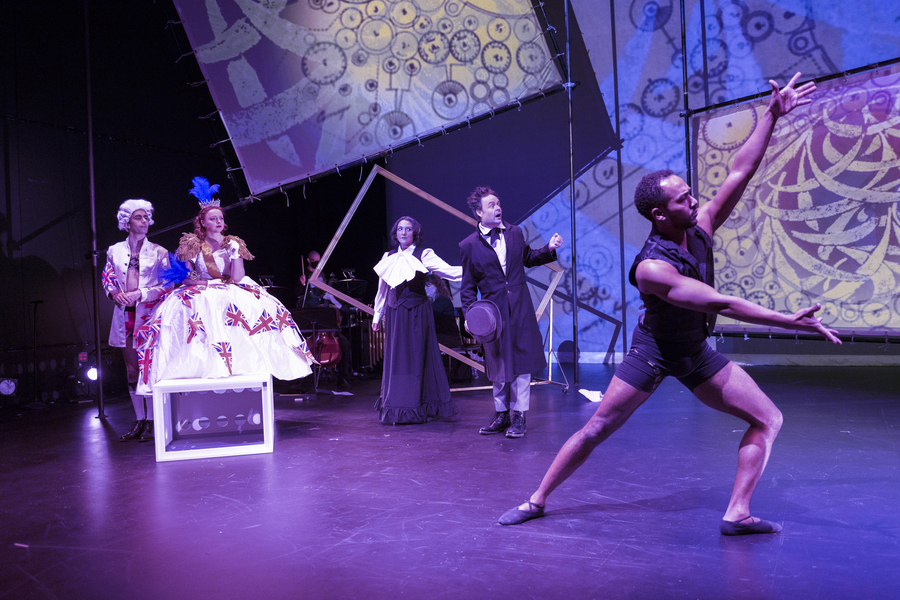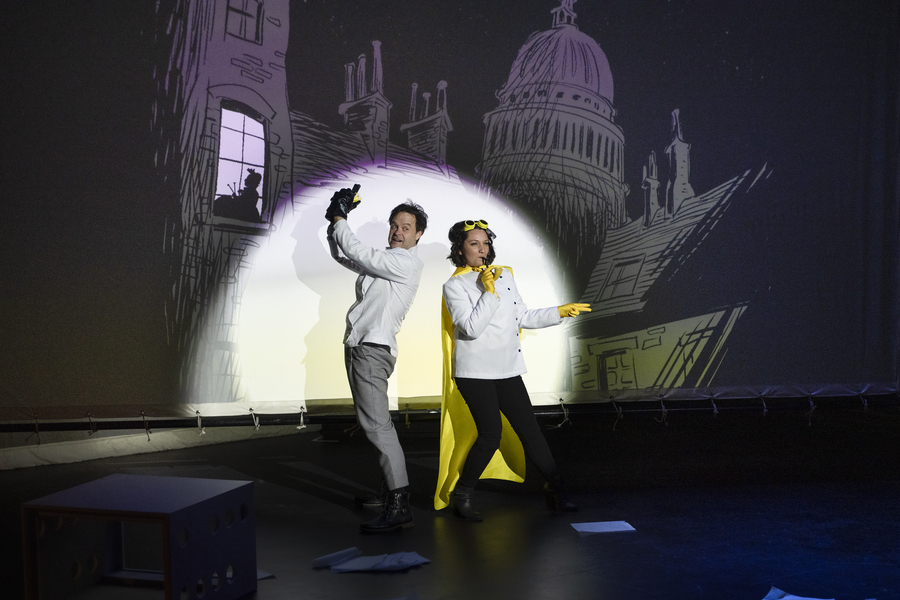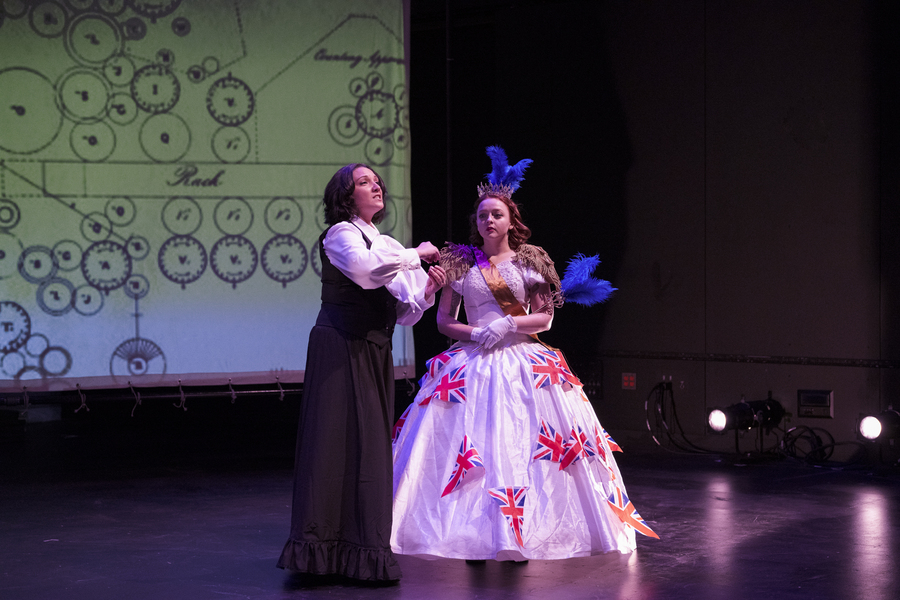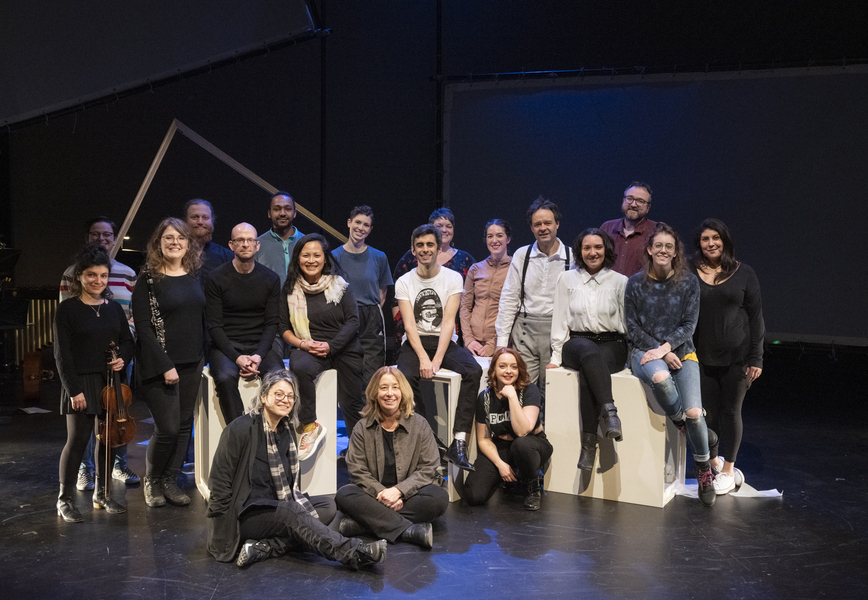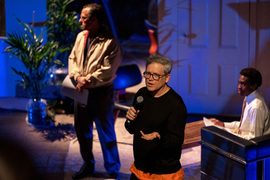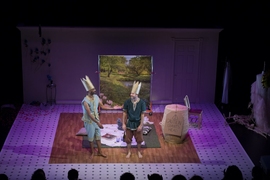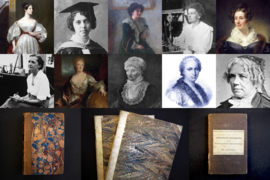Over the course of her career, the composer Elena Ruehr has found inspiration in very different writers and very different worlds. She has, for example, set poems by Emily Dickinson and Langston Hughes to music.
Her latest project, “The Thrilling Adventures of Lovelace and Babbage,” recently premiered at MIT and marks another stylistic turn. And as with many artistic projects, the initial spark was serendipitous.
Victorian scientific mavens
Ruehr, a senior lecturer in MIT Music and Theater Arts and a celebrated, versatile composer, was listening to National Public Radio while making dinner when she heard an interview with Sydney Padua, the author of a graphic novel imagining the 19th-century English prodigies Ada Lovelace and Charles Babbage as crime-fighting sleuths — the book is subtitled “The (Mostly) True Story of the First Computer.”
Ruehr’s ears immediately pricked up. One reason is that Lovelace was the daughter of Lord Byron, and Ruehr has a particular interest in the famous Romantic poet. “Our family is famous for making things up, so you have to take this with a grain of salt,” she says, laughing, “but there’s a story that we are descendants of Lord Byron through an illegitimate child he had with a maid.”
Lovelace was also a fascinating figure: She was a brilliant mathematician who collaborated with Babbage, a polymathic scientist credited for being one of the creators of the modern concept of computers. Ruehr bought Padua’s book, loved it, and decided to adapt it into an opera in collaboration with the renowned librettist Royce Vavrek, the winner of the 2017 Pulitzer Prize for Music for “Angel’s Bone” (with the composer Du Yun).
Now Ruehr and Vavrek’s piece has finally premiered, about eight years after chancing on that radio show. That the project came to fruition at MIT — where it received a 2022-23 Visiting Artist Grant from the MIT Center for Art, Science and Technology (CAST), from the 2022-23 Ida Ely Rubin Visiting Artist Fund — felt entirely natural to Ruehr, and not simply because she has been teaching there since 1992. “Some of the students know this book and love it — they would get it for Christmas,” she says. “I really wanted the opera to be produced at MIT because it seems to be such an important MIT kind of subject.”
Finding partners
In order to get this unconventional project off the ground, Ruehr knew she would need unconventional collaborators, so she approached the Boston-based Guerilla Opera and its artistic director, Aliana de la Guardia — who was not familiar with the main protagonists.
“I'm not a math person, so I had no idea of either Lovelace or Babbage,” de la Guardia says. “What drew me to this opera is that it is not a ‘biopic opera,’ but it takes these two real characters and then it's like, ‘What if everything just turned crazy?’ We see mathematics used in a whimsical way, like the old cartoon ‘Donald in Mathmagic Land.’”
Ruehr wrote with the Guerilla Opera musicians in mind, so her piece uses a violin, cello, clarinet, and percussion, along with four singers (including de la Guardia and Aaron Engebreth as the title characters). But of course, this modest size also is a practical asset. “That's a very lean opera — it's only got eight people — which is great because it’s hard to raise money for modern opera, so you want to make it very easy to produce,” Ruehr says.
Steampunk meets whimsy
This does not mean that the work thinks small, however. Musically ambitious, “The Thrilling Adventures of Lovelace and Babbage” lands in the blurry area between musical theater and opera, with Ruehr putting her own spin on the steampunk aesthetic that is very present in the source material. “To me, steampunk combines the old and the new, so that's how I approached it,” she says. “I wanted to have a structural and musical style that was a little bit like Rossini — the most popular opera composer at the time of Lovelace and Babbage — but then have a layer of modernism on top of it.”
It is not a coincidence that Rossini was a master of comic opera, or that de la Guardia mentioned whimsy, because the new project is faithful to the graphic novel’s rambunctious spirit and is not afraid of levity. Ruehr points out that while contemporary classical music has evolved and is now more approachable than it might have been 20 to 50 years ago, “the humor factor is very rare, and I don't understand why. Some of the smartest people on the planet are comedians,” she adds, “and I don't understand why humor isn't as artistically valued as anything else.”
Artistically spurred by MIT
For Ruehr, teaching at MIT has played a central role in the evolution of her own music, and she is both challenged and spurred by her students. “They want to know, ‘How is it that we hear sound and we have an emotional response?’” she says. “They're not going to say, ‘That sounds like Mozart so it's good.’ They're going to say, ‘Why does it work?’ I realized that I could bang my head against the wall trying to make something complicated and it would never satisfy them because they would get it instantly,” she continues. “But to write something that engaged them emotionally, that was a little bit of a challenge. There are dance numbers in my piece, a sense of rhythm that's kind of more regular than a lot of modern music because I'm trying to appeal to that emotional response.”
While “Lovelace and Babbage” is an engaging, approachable piece, it does not sacrifice musical sophistication. “I do not think that accessible means dumbed down — I take a stand about that,” Ruehr says. “I actually think that accessible and intelligent and smart is very possible, and it is my mission as an artist.”
The production was presented by CAST, MIT Music and Theater Arts, and Guerilla Opera. Additional project development support was received from the Council for the Arts at MIT and the DeFlorez Fund for Humor.
